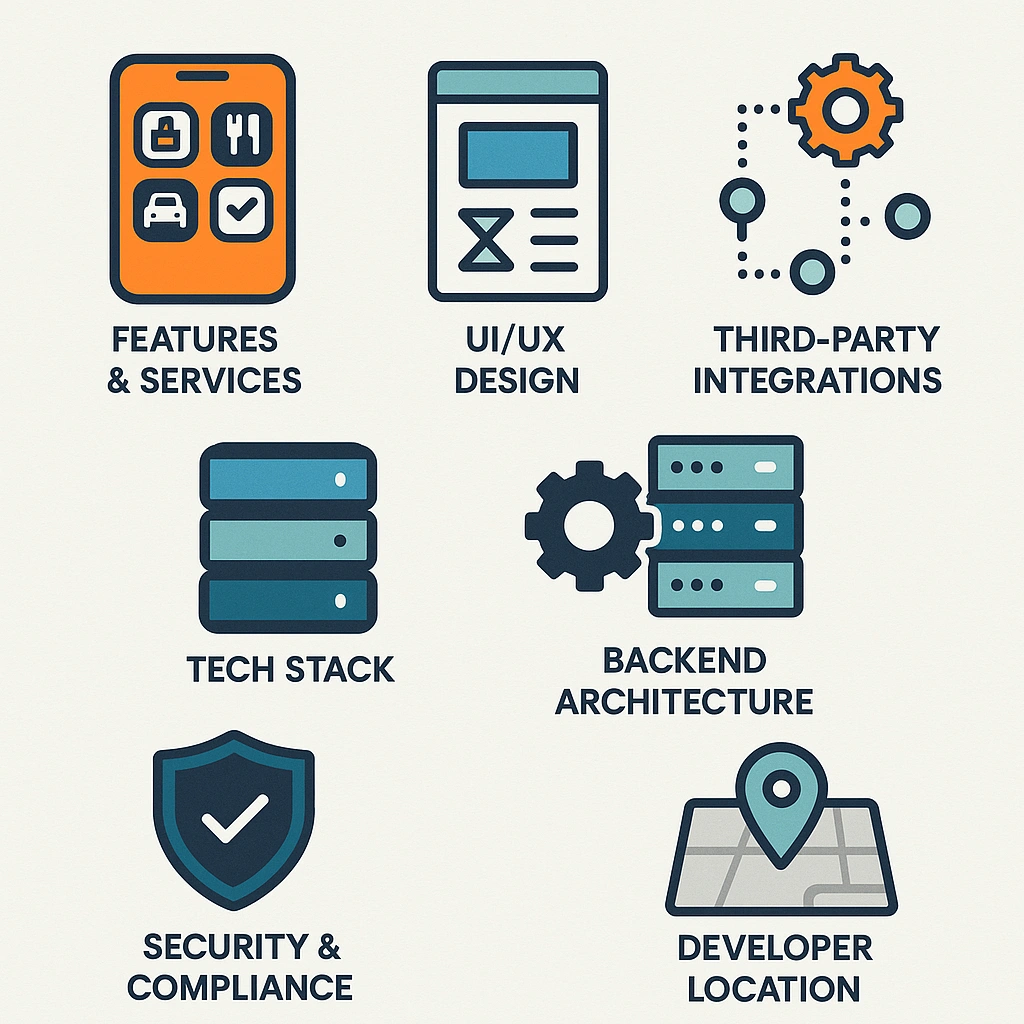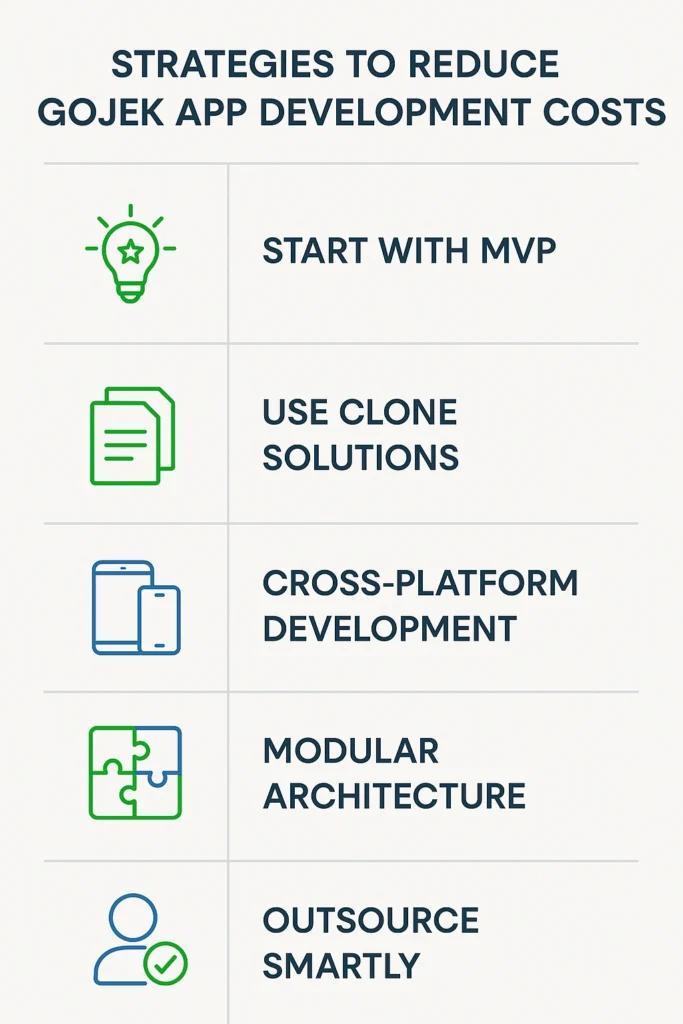Gojek App Development Cost in 2025 : Complete Cost Guide
Create a powerful, customizable streaming solution with Miracuves’ Gojek, equipped with high-performance features and next-gen technology.
Super apps like Gojek have changed how we use on-demand services — from ride-hailing and food delivery to payments and logistics, all in a single platform. For entrepreneurs, launching a Gojek-style app is a chance to tap into multiple revenue streams with one scalable product.
But before you start thinking about driver networks or food delivery partnerships, there’s a critical question: what is the cost of developing a Gojek-style super app?
The answer depends on your business model, feature set, and the technology you choose. Understanding the Gojek app development cost upfront helps you budget wisely, secure investor confidence, and avoid costly surprises during the build.
In this guide, we’ll break down the costs by factors, regions, app complexity, and timelines — and show you how to optimize your budget without sacrificing scalability or quality.

Key Factors That Influence Gojek App Development Cost
Your total development budget depends on the type of super app you’re planning — lean MVP or full-featured multi-service platform.
Here are the key cost drivers:
Multi-Service Features → Adding ride-hailing, food delivery, and payments is just the start. Expanding into grocery, logistics, and e-wallets increases development scope.
UI/UX Design → A super app needs intuitive dashboards for customers, drivers, merchants, and admins. Custom design, animations, and responsive layouts impact costs.
Third-Party Integrations → Payment gateways, real-time maps, OTP login, and analytics services all add setup and subscription costs.
Platform Support → Supporting iOS, Android, and Web increases total build time, especially if developed natively.
Customization Level → White-label clone apps reduce time and cost. Fully custom builds are flexible but far more expensive.
Backend Architecture → Real-time tracking, microservices, and high concurrency require a robust, scalable backend.
Team Location → Offshore development in India or Eastern Europe lowers hourly rates without sacrificing quality.
Gojek App Development Cost by App Complexity
To give you a clear picture, here’s a breakdown of average costs depending on complexity.
|
App Type
|
Estimated Cost Range (USD)
|
Description
|
|---|---|---|
|
MVP (Minimum Viable Product)
|
$12,000 – $25,000
|
Basic matching, user registration, profiles, messaging, and swipe functionality
|
|
Standard Version
|
$25,000 – $60,000
|
Add premium filters, likes, push notifications, social logins, geolocation features
|
|
Full-Featured App
|
$60,000 – $120,000+
|
Includes video/audio chat, AI recommendations, subscriptions, analytics, admin panel
|
Note: These are development-only estimates. Hosting, marketing, and third-party costs are billed separately.
Gojek-Style Super App Development Cost by Miracuves (2025 Pricing)
To help you estimate the right investment for building a multi-service super app, here’s a detailed breakdown of the Gojek Clone App Development Cost by Miracuves.
The pricing includes full-stack development, UI/UX design, and deployment. (Third-party APIs, hosting, and marketing are charged separately.)
|
App Type
|
Estimated Cost Range (USD)
|
Description
|
|---|---|---|
|
MVP (Minimum Viable Product)
|
$999 – $1,499
|
Basic functionality including multi-service booking, user registration, secure payments, and provider management — perfect for launching an early-stage platform.
|
|
Standard Version
|
$1,500 – $2,499
|
Adds advanced features such as real-time tracking, wallet integration, in-app chat, offers, and analytics dashboard — ideal for scaling across multiple cities.
|
|
Full-Featured App
|
$3,699 (Miracuves)
|
End-to-end Web + App + Admin platform with 60+ on-demand service modules, GPS tracking, wallets, AI analytics, and full source-code ownership.
|
Note: These costs represent Miracuves’ 2025 development-only packages. Integration with APIs (Google Maps, Twilio, Stripe, etc.) may incur additional charges.
Launch your Gojek-style super app in just 3–9 days with Miracuves — a complete, scalable, and enterprise-ready on-demand ecosystem.
Average Cost Estimates by Region
The development region significantly impacts cost due to hourly rates.
|
Region
|
Hourly Rate (USD)
|
Typical Cost for Standard App
|
|---|---|---|
|
North America
|
$100 – $200/hr
|
$100,000 – $200,000+
|
|
Western Europe
|
$80 – $150/hr
|
$80,000 – $160,000+
|
|
Eastern Europe
|
$40 – $80/hr
|
$40,000 – $90,000+
|
|
India & Southeast Asia
|
$20 – $50/hr
|
$20,000 – $60,000+
|
Note: These estimates cover UI/UX, coding, and testing, but not infra or marketing.
Cost Breakdown by Development Stage: Gojek Clone
Each stage of development adds its own cost weight. Here’s how it typically breaks down:
|
Development Stage
|
Estimated % of Total Cost
|
Includes
|
|---|---|---|
|
Discovery & Planning
|
5–10%
|
Market research, competitor analysis, defining user personas, feature scoping, technical requirements.
|
|
UI/UX Design
|
10–15%
|
Wireframing, prototyping, responsive design, visual branding, user experience mapping.
|
|
Frontend & Backend Dev
|
40–50%
|
Core feature development, database architecture, APIs, payment integrations, dashboard and logic build.
|
|
Testing & QA
|
10–15%
|
Manual and automated testing, bug fixing, device/browser compatibility checks, performance tuning.
|
|
Deployment & Launch
|
5–10%
|
App store submission (Android/iOS), server setup, production deployment, performance monitoring tools.
|
|
Maintenance & Updates
|
10–20%
|
Post-launch bug fixes, new features, server maintenance, user support, compliance updates.
|

How to Reduce Gojek App Development Costs (Without Compromising Quality)
Building a super app is expensive, but you can optimize your budget smartly:
Start with an MVP → Validate demand with core services before scaling.
Use Clone App Solutions → A Gojek clone script reduces cost & launch time.
Leverage Cross-Platform Development → Flutter/React Native saves up to 40%.
Adopt Modular Architecture → Scale services independently without rebuilding.
Outsource Smartly → Skilled offshore teams (India/Eastern Europe) lower cost without lowering quality.
At Miracuves, we specialize in modular super app solutions — helping startups launch lean, validate fast, and scale sustainably.
Choose the Right Development Partner
Even with funding and planning, launching a Gojek-style app is a huge move. Your development partner defines speed, scalability, and long-term success.
Look for:
Experience in super app development (rides, food, payments).
Strong portfolio of real-time apps with maps, payments, and chat.
Full-service support — from ideation to post-launch maintenance.
Commitment to data security, compliance, and scalability.
At Miracuves, we build secure, scalable, and cost-effective Gojek clone apps that help founders go live quickly without tech debt.
Conclusion
The Gojek app development cost in 2025 ranges from $25,000 MVP builds to over $250,000 enterprise-grade super apps. The final figure depends on your scope, tech stack, and region.
However, with Miracuves’ ready-made Gojek Clone, you can launch a fully functional multi-service app for just $3,699, built, configured, and deployed within 3–9 days.
With the right roadmap, you can enter the super app market strategically — starting lean, proving demand, and scaling with confidence.
Ready to launch your super app vision? Talk to Miracuves today for a tailored roadmap and cost breakdown — built around your goals.
Frequently Asked Questions
You can build a Gojek-style super app for just $3,699 using Miracuves’ ready-made Gojek Clone — a complete, multi-service ecosystem developed, configured, and deployed within 3–9 days, helping you launch faster and scale efficiently without the high development overhead.
You can develop and launch a Gojek clone app with Miracuves Solutions in just 3–9 days, compared to the typical 4–6 months required for a custom build. The ready-made Gojek Clone is pre-engineered for scalability, speed, and performance — ensuring a faster go-to-market without compromising quality.
Yes. Many startups launch with ride-hailing + food delivery modules first, then expand to payments, logistics, and other services as demand grows.
Absolutely. Using a ready-made Gojek clone script reduces cost by 30–40% and speeds up launch by several months.
Expect server hosting, compliance updates, maintenance, and new feature rollouts, typically 15–20% of the original development budget annually.



